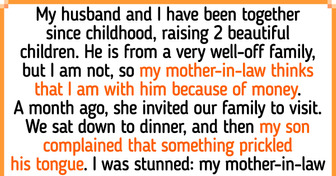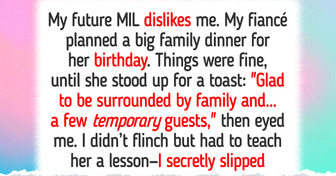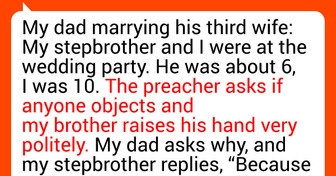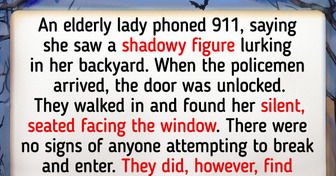I Banned My MIL from Seeing My Baby Because She Refuses to Babysit

Loki, the Norse spirit of mischief, was comfortably living around Asgard, the “headquarters” of Norse supreme beings. One day, he began looking for yet another way to prank some of his fellow Asgardians. While others were sleeping, he decided to cut off Sif’s hair. She was the wife of Thor, the protector of thunder, the sky, and agriculture. Sif was extremely proud and attached to her hair, as she had beautiful flowing blonde locks.
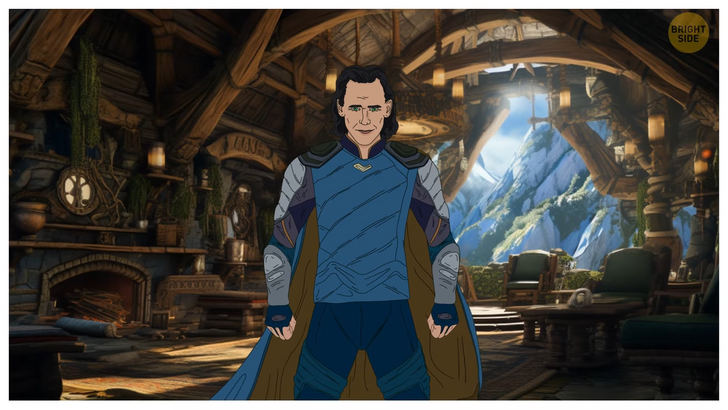
Upon seeing his wife in the morning, Thor was enraged. He immediately figured out Loki was to blame for this. Indeed, Loki was well-known for his pranks and his mischievous nature. Thor found Loki and swore he’d make him pay if he didn’t find a way to bring back his beautiful wife’s golden curls.
“I’ve taken it a bit too far this time,” Loki thought and asked Thor to let him visit Svartalfheim, the home of dwarves. They were known as master smiths and crafters, who lived underground in a maze of mines and forges. “If they can’t help me, no one can,” Loki said to himself and asked the master craftspeople if they could make new hair for Sif. “If they could make it even more beautiful than the original, that would be even better.”
“Alright,” said Thor and allowed Loki to set off for Svartalfheim, where he soon got what he desired and more! The sons of a dwarf named Ivaldi went a bit overboard with the gifts for the almighty Asgardians. Not only did they make new golden locks for Sif, but they added two other gifts, too: the best of all ships, which could be folded up and could fit inside a pocket, and a powerful spear.
“Wait a minute,” thought Loki, greedy as he was. “Maybe I could convince these guys to make me even more cool gadgets.” He reached out to other dwarfs — brothers Brokkr and Sindri — and began to taunt them. Loki spoke to dwarfs about the gifts he’d previously received. To be even more convincing, he bet his own head that they’d never be able to make such great gifts. Dwarfs were very proud creatures and sure of their abilities, so they quickly accepted Loki’s bet.
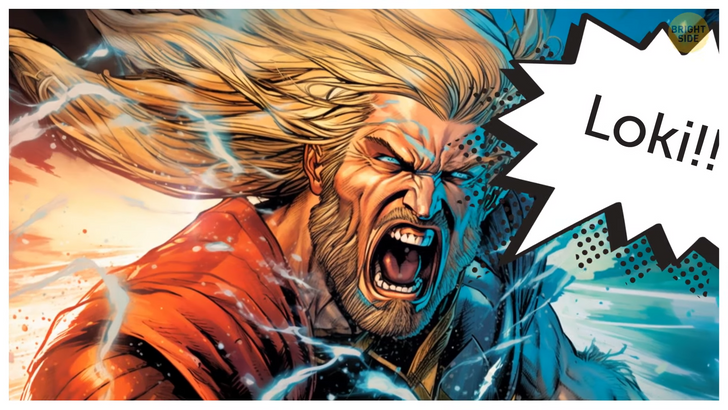
Loki wasn’t ready to lose his head, of course. So, he put his mischief to great use and devised a plan to make sure the second pair of dwarfs would lose the bet. He disguised himself as a fly and tried to sting them as they worked on the gifts.
The first gift to be pulled out of the fire was a living boar with golden fur. It had the ability to give off light in the dark and was said to run better than any horse. Loki tried to sting the working dwarf’s hand, so he would ruin the first gift, but it didn’t work out. The dwarf didn’t even flinch.
The second gift was a mighty ring that could replicate itself eight times every ninth night. Loki-the-fly desperately tried to sting the working dwarf on the back of his neck, but he didn’t succeed this time either. The gift was already crafted, and it was perfect.
The dwarfs knew they had to be extra meticulous with their last gift as any mistake would be devastating. They wanted this last one to be the best gift of all, as they planned to hand it over to Thor himself. To make sure he’d succeed this time, Loki sat on one of the dwarfs’ eyelids and blocked his vision from properly seeing his work. The last gift they made was a hammer of unseen qualities: it never missed its mark and could boomerang its way back to the owner after being thrown. Sadly, it did have one single flaw: its handle was too short.
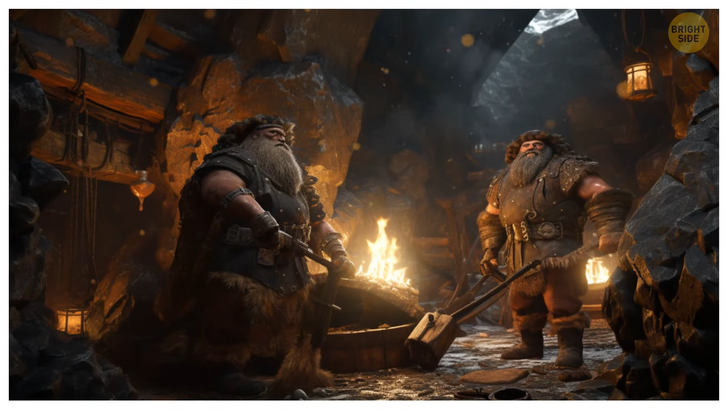
The dwarfs named this last gift Mjollnir (which translates to “Lightning”). This special hammer was able to summon such elements as wind, rain, thunder, and lightning so that the wielder could use them at their discretion. It was also a powerful tool for sending out lightning bolts. The dwarfs knew it wasn’t perfect because of its handle, but they still agreed to take all their gifts to Asgard to present them, still very confident of their endeavor.
Loki addressed his fellow Asgardians, knowing that the gifts he’d come back with would please them. He was also very sure that everybody would see the flaw in Mjöllnir the hammer and conclude that it wasn’t indeed the best gift. Thor was the one to receive Sif’s new hair and the faulty hammer. Odin, his father, got the ring and the spear. And Freyr, the spirit of kingship and peace, got the boar and the ship.
To Loki’s disappointment, the Asgardians did agree that the hammer was the best gift of them all. They saw its inestimable use in their future battles against giants. Which also meant that Loki owed the dwarves his head. “Hold on a minute,” said Loki. “Indeed, I pledged my head on this wager, and I do intend to keep my promise. But I never said anything about my neck!”
“He is right,” they all said. There was no way the dwarfs could receive what they were promised without hurting Loki’s neck. But smart as they were, the dwarves knew they just couldn’t let Loki get away so easily. So, to make sure he’d never prank anyone ever again, they decided to glue his mouth shut. In all fairness, they did own Loki’s head, didn’t they?
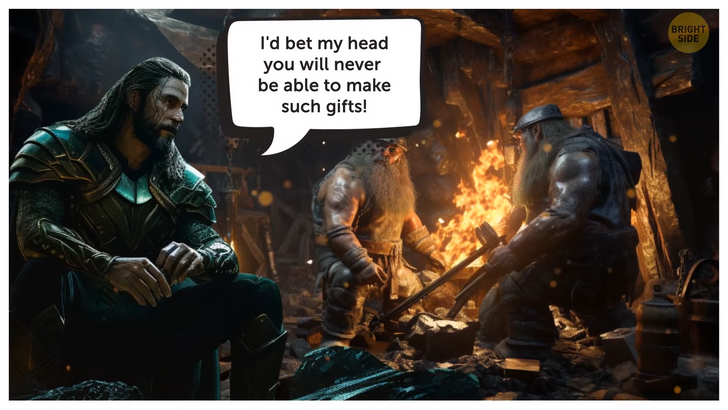
Thor and his hammer are a very important part of Norse mythology. But this story is only one of the few things that might surprise you about this powerful Northern spirit. For example, a lot of places in the world are named after him. There’s a bunch of Mount Thors in Canada, Alaska, and Antarctica, and Thors Fjord in Greenland. There’s even a volcano on one of Jupiter’s moons, Io, named after Thor.
A chemical element was also named in his honor. It’s called thorium. It was discovered by a Swedish scientist back in the 19th century. Since he’s known for casting lightning and thunder, a lot of English words are derived from the name Thor, too. Like thunder — well, obviously — but also Thursday. In Norse mythology, it was the day of the week when Thor was celebrated.
His hammer wasn’t his only cool gadget. Old stories also mention Thor having a powerful belt and iron gloves, which helped to double his already impressive strength. We might know him from movies as a slender, blonde-haired young man. But old tales describe him as a fierce-eyed, red-haired, and red-bearded man of medium height with a strong muscled build.
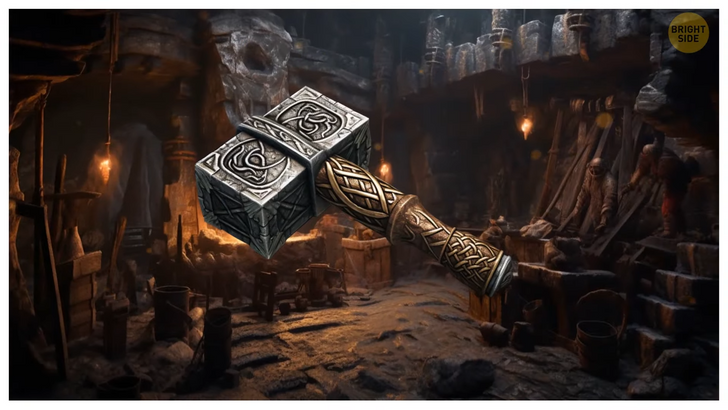
The same stories describe him as the protector of humankind. But it’s also often noted that he had a really bad temper, often lashing out at other Asgardians. The diversity of stories in Norse mythology doesn’t stop there. The first humans, for example, are said to have been made from trees. Their names were Ask and Embla. In case it doesn’t ring any bells, that’s where we got the names for the ash and elm trees.
Unlike any other deities from other cultures, those from Norse mythology aren’t immortal. They are just extremely long-lived and owe their youth and vitality to eating magical apples. One of the most important events in the Nordic tales is called Ragnarök. It’s a complex series of events, including a great battle and the loss of a number of great figures — like Odin, Thor, and Loki. It ultimately leads to the submersion of the world in water. After its reemergence, the world was said to have been born again, cleansed of all those previous disasters.
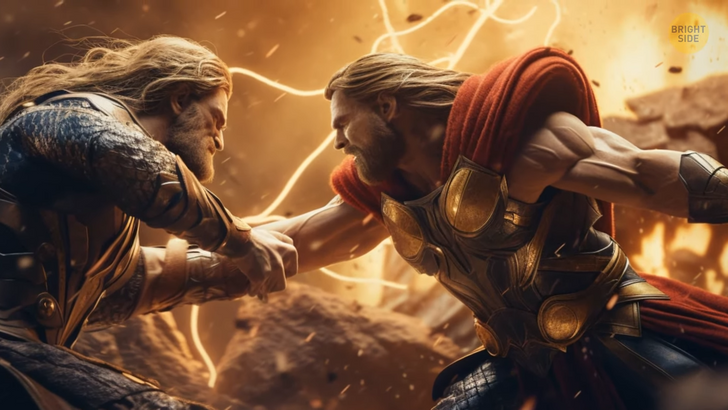
If Norse mythology sounds like something you’d like to read more about, get a book called Poetic Edda. It’s a collection of anonymous narrative poems detailing stories from Nordic folklore. Some of these tales date as far back as the 10th century and are the source for many of today’s movies and TV shows depicting Thor, Odin, and Loki.



